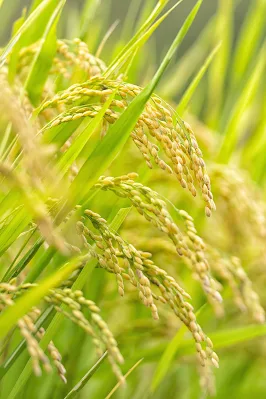Role of Cytokinins in Agriculture
The search for greater
yields, hardy crops, and sustainable agricultural methods is an ongoing process
in agriculture. Scientists have been delving into the fascinating world of
plant hormones in this dynamic environment, discovering their tremendous impact
on crop development, health, and adaptability. One subset of these plant
hormones, the cytokinins, has become a key factor in the agricultural industry,
providing answers to some of the most important problems that farmers around
the world are currently dealing with.
Within plants, cytokinins
act as the directors of a symphony, directing different growth processes and
reactions to environmental changes. They are crucial in both increasing crop
output and protecting plants from the damaging impacts of abiotic conditions
such as salinity, drought, and severe temperatures. In this blog, we explore
the significance of cytokinins in agriculture, their effects on plant
development and stress tolerance, and how they have the potential to transform
contemporary farming methods.
Types of Cytokinins:
Adenine-Type Cytokinins:
Adenine makes up the
fundamental structure of these cytokinins. The most popular adenine-type
cytokinins are as follows:
Zeatin: One
of the well-investigated cytokinins is Zeatin. It is a substance that naturally
appears in a variety of plant tissues and is linked to cell division and shoot
development. Zeatin comes in a variety of forms, such as trans- and cis-zeatin.
Dihydrozeatin: Dihydrozeatin
shares structural similarities with zeatin and is also a growth-promoting
substance.
Isopentenyladenine
(IPA)-Type Cytokinins:
Isopentenyladenine is the
source of these cytokinins. A few instances of IPA-type cytokinins include:
Isopentenyladenine (IPA):
IPA
is an organic cytokinin that promotes plant growth by promoting cell division,
the development of new shoots, and overall plant growth.
Triacontanol: Long-chain
cytokinin triacontanol has been discovered to promote plant growth and stress
tolerance. Contrary to several other cytokinins, it is not as frequently
investigated.
Synthetic cytokinins have
been created for use in horticulture and agriculture in addition to these two
primary types.
Synthetic cytokinins:
Benzyladenine (BA): Because
it is so successful at encouraging the production of shoots and roots,
benzyladenine (BA), a synthetic cytokinin, is frequently employed in tissue
culture and plant propagation.
Kinetin: One
of the first cytokinins to be identified was kinetin, a synthetic cytokinin.
Although it is less frequently employed these days, it was historically
important for the research of plant hormones.
Forchlorfenuron (CPPU): Forchlorfenuron
is a synthetic cytokinin that is employed in agriculture to boost yields and
encourage the growth of fruit in a variety of crops, including grapes and
kiwifruit.
6-Benzylaminopurine
(6-BA): 6BA a synthetic cytokinin having qualities resembling
those of natural cytokinins, is a plant growth regulator. Due to its capacity
to encourage cell division and general plant growth, it is frequently employed
in horticulture, agriculture, and tissue culture.
It's crucial to remember
that many plant species produce a range of naturally occurring cytokinins and
that the precise kinds and proportions of cytokinins present might differ
between various plant species and tissues. Only a few of the most well-known
and frequently studied cytokinins are represented by the names and categories
of cytokinins that were previously stated. Future cytokinin discoveries may
result from ongoing research into the functions of various cytokinins in plant
growth and development.
Cytokinins are essential for both plant growth and
development and the reduction of abiotic stress. They perform a variety of
tasks and have an impact on different physiological systems in plants. The
effect of cytokinins in promoting plant growth and reducing abiotic stress is
described as follows:
Cell division: The
ability of cytokinins to induce cell division is well established. They
encourage the development of the shoot and root meristems, which results in a
rise in cell density and tissue expansion. The growth of the entire plant
depends on this.
Shoot Development: By
promoting lateral bud growth and branching, cytokinins offset the auxin-caused
apical dominance impact. This causes more branches to grow, which makes the
plant bushier and stronger as a result.
Root Growth: While
cytokinins often encourage shoot growth, they prevent roots from growing
longer. The architecture of the plant and optimal nutrient uptake depend on
this balance between shoot and root growth.
Delaying Senescence: Cytokinins
can prevent plant tissues, particularly leaves, from aging and senescence.
Increased photosynthesis and nutrient uptake are the results of the leaves'
ability to stay green and functional for longer.
Flowering and Fruit
Development: By encouraging flower formation and fruit
growth, cytokinins also impact blooming and fruit development. They
influence the quantity and size of fruits that are produced.
Drought stress: It
has been demonstrated that cytokinins improve plant tolerance to drought. They
aid in controlling the opening and closing of stomata, hence minimizing water
loss through transpiration. This can aid plants in water conservation when
under drought stress.
Salt Stress: By
enhancing ion homeostasis and lowering the harmful consequences of too much
salt in plant cells, cytokinins can reduce the effects of salt stress. They
also encourage root development, which can help the body tolerate salt stress.
Heat Stress: By
controlling numerous physiological processes like photosynthesis and
antioxidant defense mechanisms, cytokinins can assist plants in surviving heat
stress. They might improve the plant's tolerance for hot temperatures.
Oxidative Stress: Reactive
oxygen species (ROS) can be removed by cytokinins, which lowers oxidative
stress in plant cells. This is crucial in stressful circumstances, as when
exposed to pollutants or intense light.
Nutrient Uptake: By
encouraging root development and increasing the effectiveness of nutrient
transport networks, cytokinins can boost nutrient uptake. Under circumstances
where nutrients are scarce, this may be advantageous.
Overall Stress Tolerance:
Overall Stress Tolerance: By enhancing a plant's capacity to adapt to shifting
environmental conditions and minimizing the negative effects of stress factors,
cytokinins can increase a plant's overall stress tolerance.
It's vital to remember
that cytokinin concentration, plant species, and certain environmental factors
can all affect how cytokinins affect plant development and stress tolerance.
For plants to grow and respond to stress optimally, the hormones auxin,
gibberellin, and abscisic acid must be balanced with cytokinins. In order to
maximize crop output and stress tolerance, researchers are still investigating
cytokinins in horticulture and agriculture.
In conclusion, cytokinins
have a very extraordinary role in agriculture. These plant hormones are the
unsung heroes that coordinate crucial aspects of plant growth, development, and
stress response, despite frequently being overshadowed by their more well-known
counterparts like auxins and gibberellins. In the fight against abiotic stress
factors that imperil crop output, cytokinins are crucial allies. Agricultural
systems can be severely damaged by stresses like drought, salt, excessive
temperatures, and others. By encouraging nutrient transport, improving the
plant's ability to use water, and strengthening its defense mechanisms,
cytokinins act as stress mitigators. How to acquire access to high-quality
cytokinins is crucial for improved outcomes.



